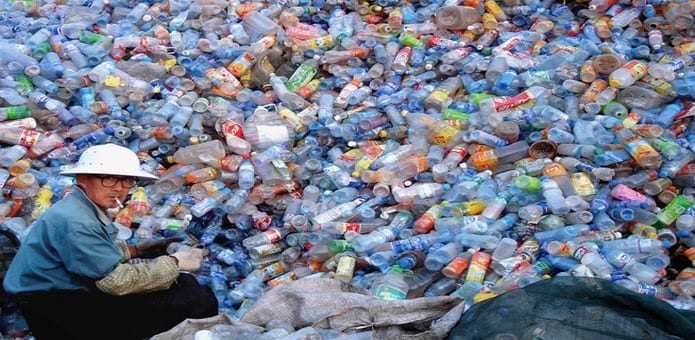Scientist Produces A Recyclable Biopolymer That Could Recycle All Plastic Products And Make It Renewable In The Future
The world especially the 3rd world and developing countries face a huge problem from the used plastic products. This non biodegradable plastic waste not only poses a huge environmental threat to our climate but it is also toxic and could cause human fatalities. A chemist from Colorado State University has found out a way to produce a recyclable biopolymer that could solve the above problem and use the plastic waste for manufacturing recycled product.
A chemist at the Colorado State University, Eugene Chen experimented on the monomer Gamma-butyrolactone to manufacture a biopolymer that can be entirely recycled back to its original monomer state for re-use.
With plastics taking the number one spot in years production and waste, on an average more than 200 pounds of synthetic polymers (many of these are not biorenewable/biodegradable) are used per person each year indicate the statistics.
Around 10-20 million tons of plastic finds its way into the Earth’s oceans every year, which in total is an estimated 5.25 trillion plastic fragments, weighing 268,940 tons. An estimated loss of $13 billion each year results from the damage that is done to the oceans ecosystem from plastic remains.
Currently, available bioplastics like the PLA could only undergo partial thermal recycling until the discovery. In comparison, using a heat reaction, the biopolymer developed by Chen called poly(GBL) can be recycled to its base monomer form. The polymerisation process can start again for use in future plastic products from its base GBL monomer.
A colorless liquid, GBL has many uses, of which are a superglue remover and a cleaning solution. Before Chen’s discovery, the scientific community had formed a theory that changing GBL to a polymer could not be done.
However, Chen and his partner, Miao Hong, who thought differently carried out experiments. They discovered a method in the end that led to the production of poly(GBL) from GBL. Using the polymer, the duo then developed a method to make shapes.
By varying the catalysts used and the reaction conditions of the production process, Chen and Hong were able to make cyclic and linear versions of the polymer.
To show that polymer is thermal recyclable, Chen’s team specially designed reaction conditions, along with the low temperature, to make the polymer and heat between 220-300 degrees Celsius to change the polymer back into the original monomer.
Poly(GBL) has similarities with the commonly used biodegradable bioplastic—P4HB.
In comparison to P4HB, poly(GHB) is however less expensive to produce, is more abundant and is a more environmentally-friendly alternative. Thus, in order to relieve the growing demand of bioplastics, making the poly(GHB) is an increasingly potential replacement to the P4HB.
These properties of the poly(GBL) emphasizes its extremely large industry-changing potential. Most importantly, it is petroleum-free that can be broken down by living organisms (biodegradable) and can be fully recycled for use in the future.
The discovery has been published in a recent issue of Nature Chemistry journal by Chen and Hong. Chen who recently received the Presidential Green Chemistry Challenge Award has also filed a provisional patent for the discovery.


